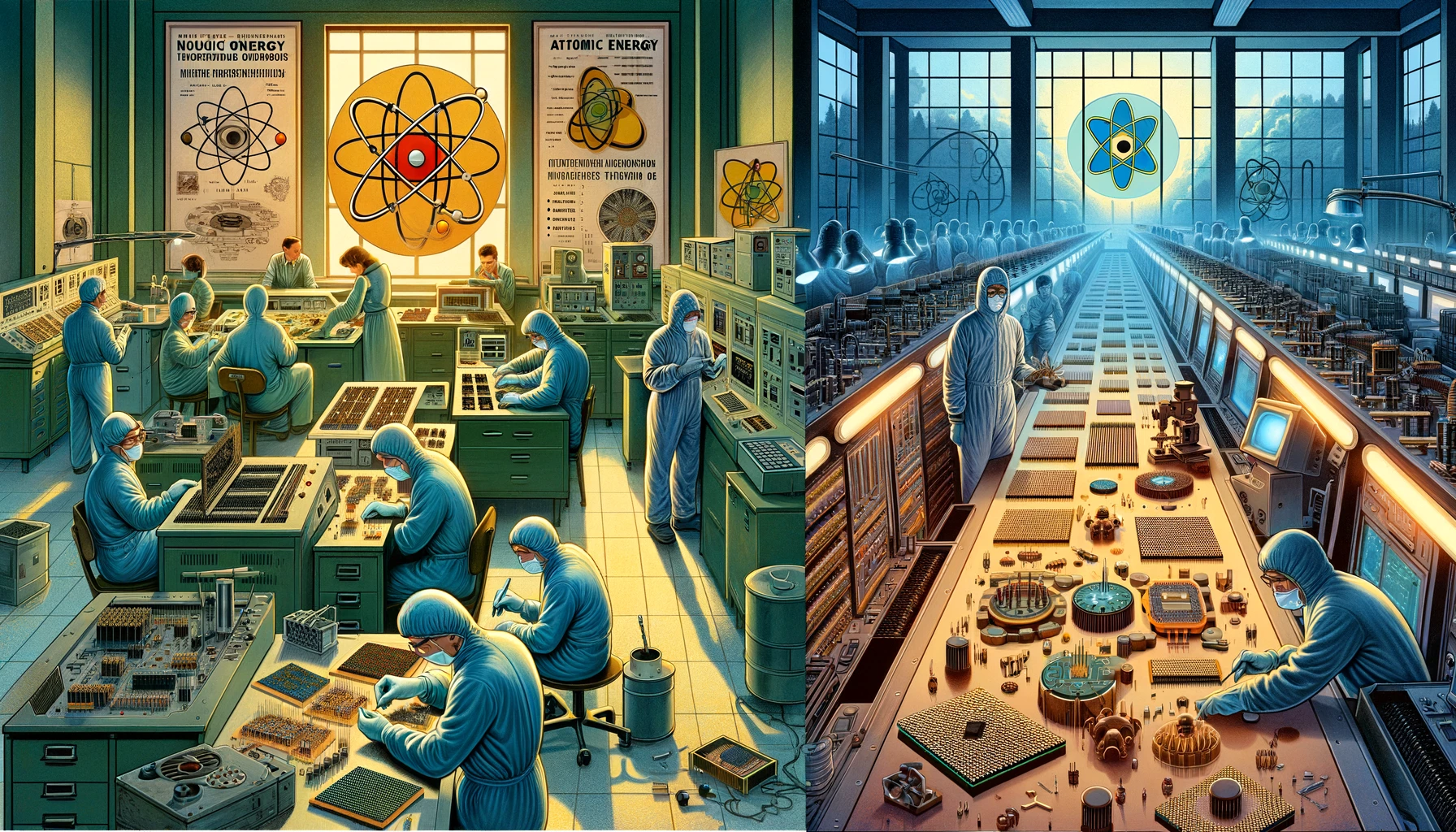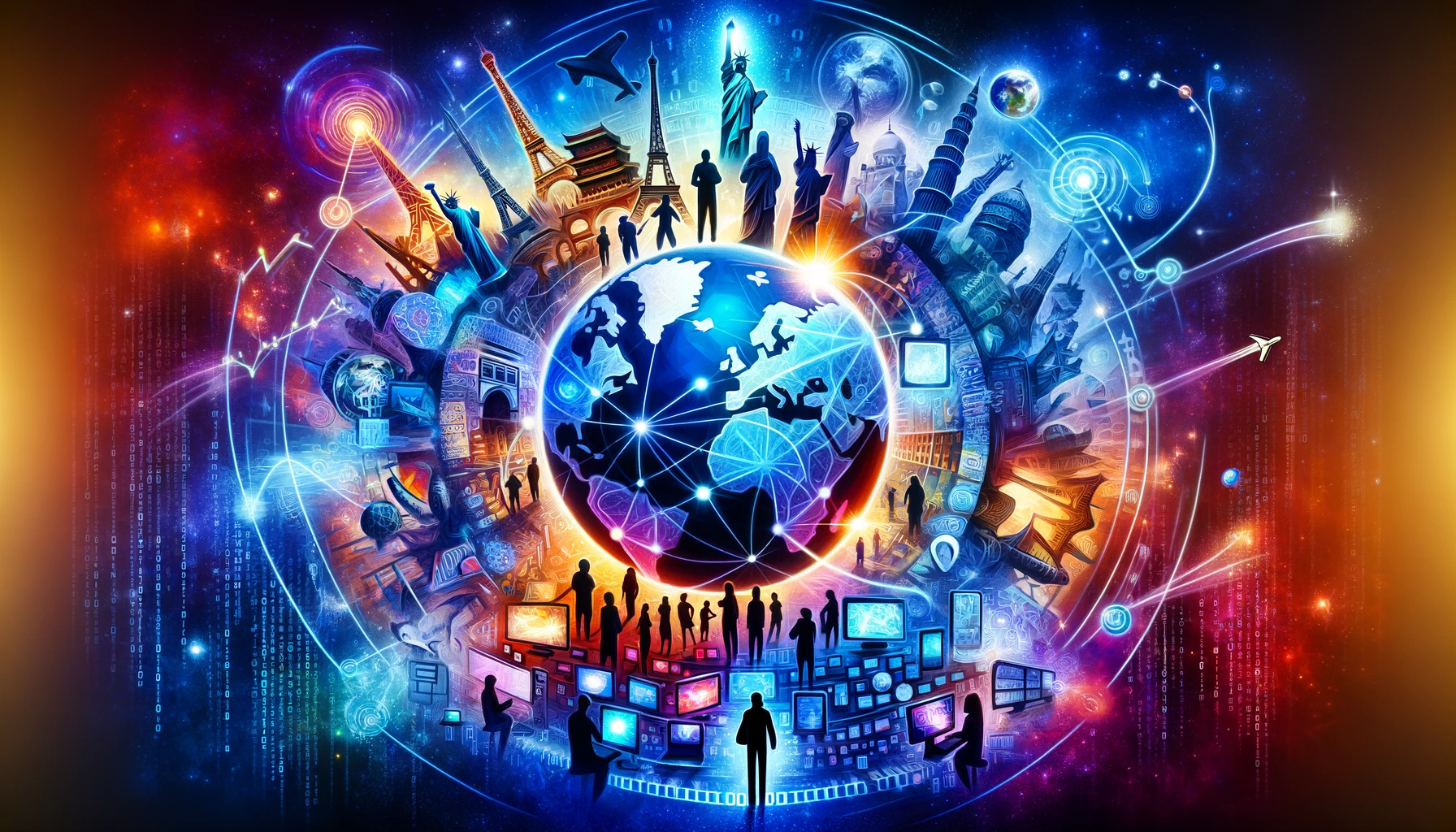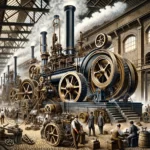Introduction
The Third Industrial Revolution, which started in the 1950s, ushered in a new and unparalleled period. This significant era marked a profound transition from analog to digital, permanently altering the technology terrain and our engagements within it. The core of this revolution consisted of semiconductors, personal computers, and the Internet, which fundamentally reshaped the limits of innovation and usefulness. Electronic devices saw a transformation by including vibrant colors, departing from the previous dominance of monochrome patterns.
Along with modern designs and innovative features like movie streaming and energy efficiency, televisions also evolved by adopting digital formats. During this period, the electronics industry experienced rapid growth, leading to substantial improvements in production automation and the reinforcement of worldwide supply networks. Nuclear energy played a crucial role in the advancement of electronics, facilitating the creation of transistors and microprocessors.
Simultaneously, the telecommunications industry witnessed unparalleled expansion owing to the Internet, which enabled the amalgamation of cultures, expedited computational operations, and established novel avenues for space exploration and biotechnological investigation. Global societal structures and business models have undergone a fundamental transformation as a result of the Internet’s revolutionary advancement in communication and the global distribution of knowledge.
The Evolution of Automation in Industry
During the Third Industrial Revolution, the industrial sector saw a significant advancement in automation, mainly due to the introduction of two key innovations: programmable logic controllers (PLCs) and robotics. These innovations ushered in a new era of industry with unparalleled versatility and efficiency.

Concurrent with technological progress, a substantial wave of globalization has profoundly altered demographic patterns worldwide. The global accessibility of information has empowered millions of individuals around the world to relocate in search of improved living conditions, resulting in a significant migration flow from the Eastern regions to the Western regions. This migration highlighted the concept of a global village, demonstrating the extent to which the globe is interrelated and interdependent.
The Digital Economy and Its Implications
The digital economy, a field that stands out for its unmatched reliance on digital technologies, also rose faster as a result of the revolution. The advent of e-commerce platforms, digital marketing, and online financial services has resulted in the displacement of conventional business models, fostering a globally interconnected, streamlined, and easily accessible market.

The emergence of digital currencies and blockchain technology illustrated the significant transformations in transactional processes and the exchange of value. The advent of the digital economy has not only generated new employment opportunities but has also necessitated a reassessment of skill sets, resulting in substantial changes in education and workforce development programs.
The Impact on Society and Culture
The Third Industrial Revolution’s digital transition has had a significant impact on both social and cultural aspects. It facilitated universal access to knowledge, removing geographical and social obstacles. Social media platforms and online communities have facilitated a novel type of worldwide engagement and self-expression, exerting an impact on public sentiment, political activism, and artistic creation. Nevertheless, this period also brought forth difficulties about confidentiality, data protection, and the disparity in access to digital resources, underscoring the importance of ethical deliberations and fair availability in the digital world.
Conclusion
Upon contemplation of the Third Industrial Revolution, we acknowledge it as a pivotal period that established the foundation for the intricate and interconnected world we currently traverse. It was a period that fundamentally transformed the way humans interacted with technology, resulting in notable progress in our lifestyles, occupations, and social connections. The impact of the revolution is clearly visible in the pervasive digital-first strategy that encompasses all facets of contemporary society, encompassing communication, entertainment, commerce, and governance.
The Fourth Industrial Revolution is built upon the technological advancements and socioeconomic changes that were established during the Third Industrial Revolution. The future stage, which is characterized by the fusion of digital, biological, and physical realms using new technologies like artificial intelligence, the Internet of Things, and quantum computing, has the potential to further blur the boundaries between reality and virtuality as well as between humans and machines. As we explore this unknown area, the knowledge gained from the last revolution will be extremely important in successfully navigating the potential and challenges of this new digital frontier, guaranteeing a future that effectively utilizes technology for the benefit of all.
External Sources:



